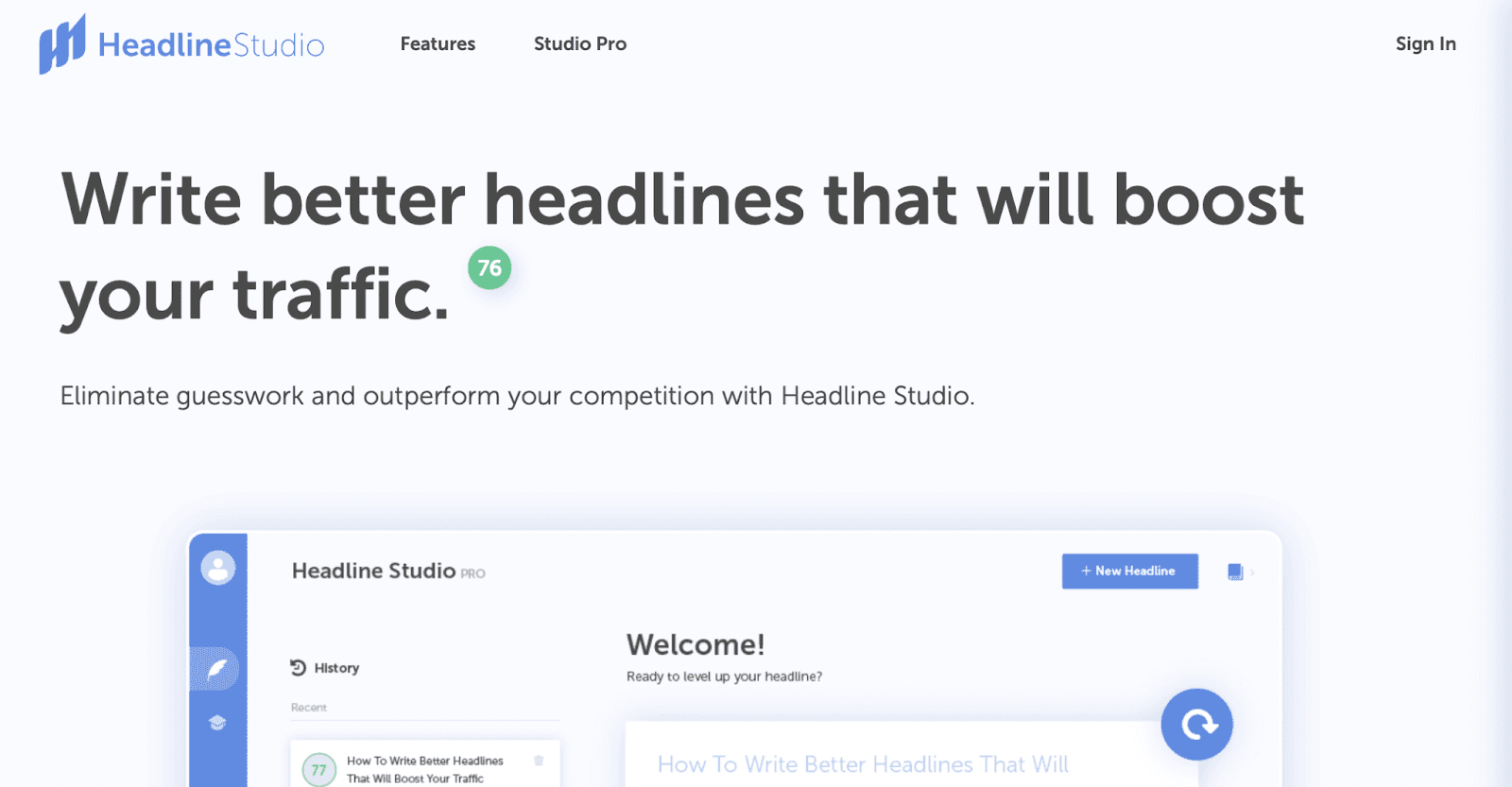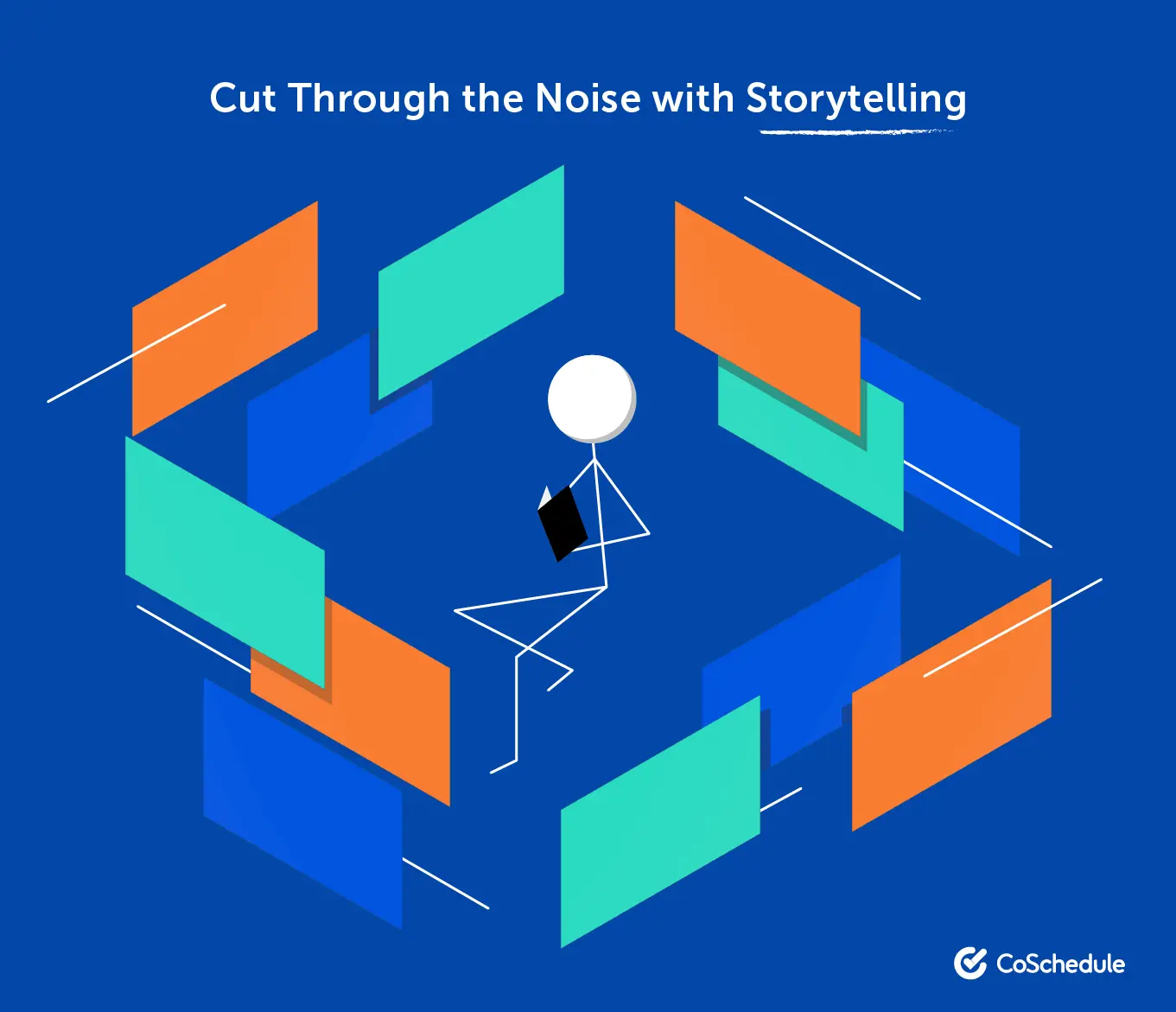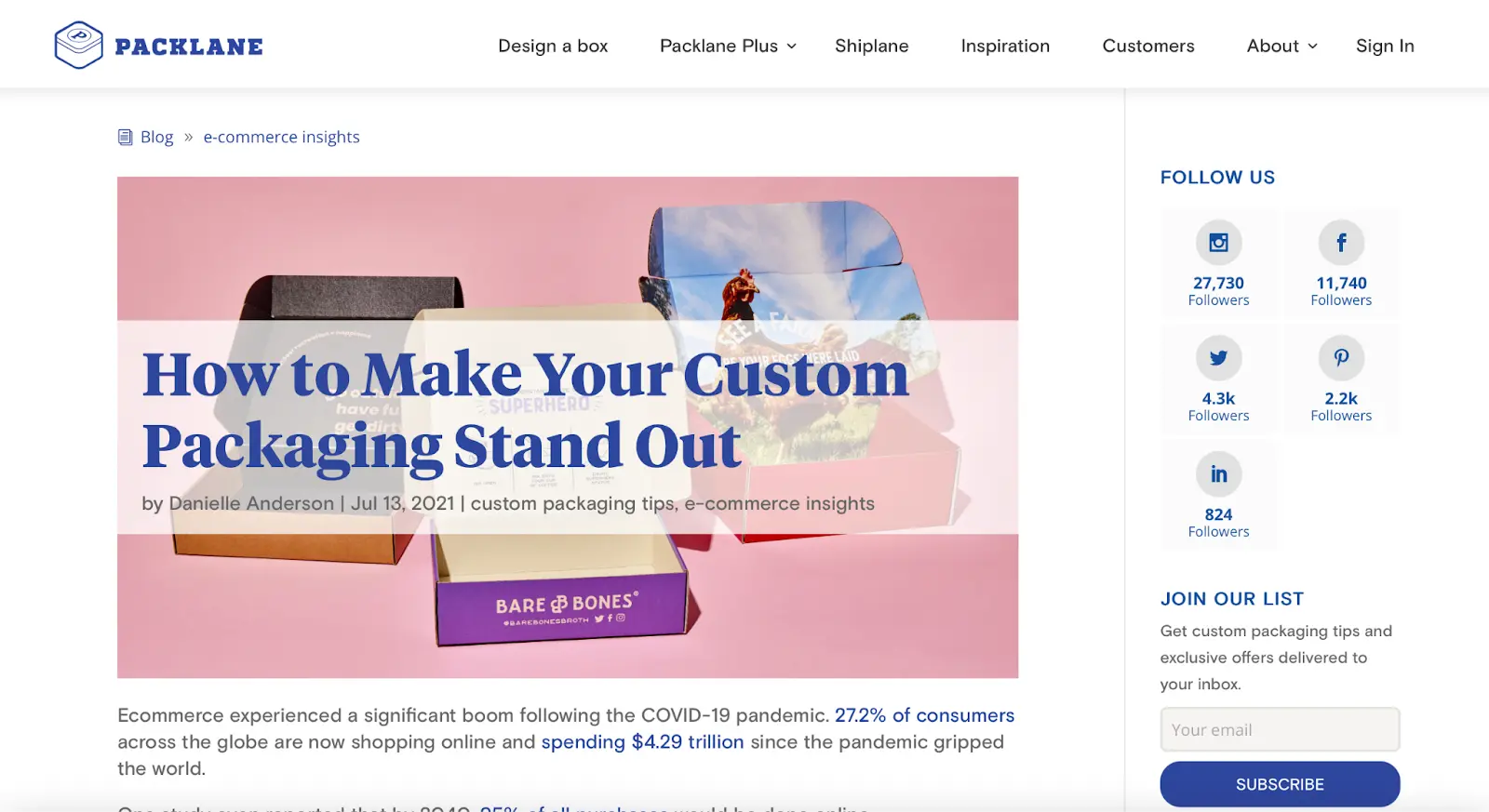
Many businesses are struggling to gain an online following because they are unsure how to create content that will resonate with their target audience. The mistake they are making is not realizing that the content they publish can engage their reader base and convert them into customers.
Good content is more than just well-written content; it's about giving the readers what they came to your website for.
Writing content that converts is an essential step in staying relevant for customers in the new normal.
Follow these 11 simple but effective ways to create content that converts and boosts your sales. But first…
Create Your Free Marketing Calendar
If you want to create high-converting content, you need a calendar to help you organize your workflow and process. Luckily, you can now create your forever-
free marketing calendar with CoSchedule and take your marketing to the next level!
1. Be Specific About Your Content Marketing Goals
The goal of content marketing is to attract potential customers and develop positive relationships with them by delivering content that solves their pain points. Content should target specific audiences that align with your business goals.
Many companies focus on the more general aspects of their content marketing, but these days very few businesses have a firm understanding of what they’re looking to accomplish. Your goal should be specific, measurable, aspirational, timely, and relevant to your target market.

It must be emphasized here that both the sales and marketing departments must agree on what the goal is. If the goal is to increase the conversion rate, they must agree on the specific rate that they would consider as successful.
Examples of specific content marketing goals are:
- Achieve conversion rate of more than 10%.
- Grow email list by 5%
- Increase customer retention rate by 15%.
Remember that you want to be realistic with your goals as well.
2. Ensure Your Website is User-Friendly
Many people these days will not use a website if it is not user-friendly. Websites that are slow, not mobile responsive, and have poor site navigation negatively
affect the user experience. This breaks the ability of published content to convert readers into paying customers.
Websites that aim for simplicity and ease of use
provide a consistent experience for the user. With more and more people using Internet search engines to find information, it is important to make sure your website caters to those searching for businesses just like yours.
A website should be designed with the user in mind. It should adapt to different browsers and take into account the user's screen size. You must consider how a user interacts with a website. You should design your site so it will work effectively for whatever device the users have at their disposal.
 Image source
Image source
Website user experience counts factors like mobile readiness and optimization, among other things.
This isn’t just for your consumers, either, though that definitely is the end user. Google has since added user experience, which counts factors like mobile optimization and performance, in its ranking factors.
So to make your content work harder and stand a chance at ranking on the first page of Google, and increase conversions along the way, you’ll want to make sure your site has great user experience through and through.
3. Spy On Your Competitors
Conducting a content gap analysis is important for any business that wants to create great content but sometimes may feel overwhelmed by the task.
People are looking for high-quality content personalized to their needs, not just another article about the same topic. Content gap analysis provides a valuable understanding of what topics are missing from your content strategy.
One of the most important aspects of content marketing is finding out what your target audience wants to learn. The more you know about their interests, the more you can provide them with the content they search for.

Of course, it's not always easy to identify what people want to read or watch because, at times, they don't even know.
An effective way to secure this content is by researching what your competitors are producing (or not producing) and filling the missing content or topics. It can help determine how much content your competitors have, what keywords they used, and what strategies they implemented to reach their audience. The information can help you create content that will surpass that of the competition.
4. Prioritize Your Content’s Headline
Headlines need to grab people’s attention and make them want to click through and then read your article. It should be something compelling and concise enough that readers will want to read more.
You should spend time crafting your headline to make sure it speaks to your audience and will get them interested in reading more. But avoid clickbait headlines that don’t deliver what they promise.
CoSchedule has a tool called
Headline Studio which analyzes your headlines and provides you with suggestions on how to improve them. Better headlines can drive traffic to your content, increase engagement, and help with search engine optimization.
Using the tool couldn’t be simpler. You’ll type your headline ideas in, then get a score for each one. You even receive ideas and recommendations to tweak your headline drafts to improve your score.

5. Tell Stories
You can use storytelling to create a connection with customers, create uniqueness in the product, and make customers feel like they are part of something special. It helps engage potential customers and make them feel like they are
part of an exciting story.
Storytelling in content marketing increases an emotional connection to a product. People are more likely to buy products they can relate to and feel an empathy towards which is why companies use
storytelling as a tool to engage with their audience.
Modern marketing has changed dramatically in recent years. Consumers are constantly bombarded with ads and requests to try new products. Stories provide an alternative way to engage with consumers, making an emotional connection that can encourage them to make a purchase.

Here’s how we recommend you tell stories to delight your audience through your content to get them to convert:
- Start with empathy. When you empathize with customers, you show them that you understand the problems they’re facing.
- Highlight problems, but do it kindly. Some customers are problem-aware, but others aren’t. If you can clearly inject real examples of their problems that make them aware they too share these, then they’ll be more likely to keep reading and then explore solutions your business offers. But do this kindly and honestly; don’t blow up the size of their problems if they aren’t really that grave.
- Show customers the “happy ending.” Stories have a beginning, middle, then end. In your content, you can show customers a happy ending where they’ve found solutions to their problems. As you might guess, this is a great time to introduce your own solutions and products in the story.
6. Brush Up on Your Persuasive Writing Skills
Persuasive writing is the ability to make an argument sound believable to your reader and can be used in all types of communication.
While persuasive writing skills are beneficial across the board, they are especially important for content marketing. The truth is most people won't care about what you're saying unless they believe it's true—and
that's where persuasive copywriting comes into play.
Persuasive writing skills are critical for content marketers to be successful. The ability to communicate a message convincingly and passionately is essential to convey the value of your product or service. In order to
create persuasive copy, it's essential to understand how people think and what they're looking for in your article.
Persuasive content writing requires knowledge of the current industry climate and trends and familiarity with popular opinions and beliefs. You should also know your audience and tailor your message accordingly.
7. Focus on Quality
The internet is changing the way people obtain information. The majority of consumers today start with search engines to find what they are looking for on the internet.
Businesses that don't maintain their websites or blog with new content will lose out on potential customers. Articles that provide original content and insights into a topic are likely to rank high on search engine pages, which will give them more exposure.
But putting out many articles and hoping some of them work is not the best way to go about content marketing. Quality is still a huge factor in content marketing success.
A great example of high-quality content is
Packlane’s article on making custom packaging that stands out. It has all the elements that readers look for in an article. It’s not only informative, but it also shows a step-by-step guide and real-life examples, and at the same time featuring some of their products.

Customers who get value out of blog posts are more likely to have positive feelings associated with your brand. So don’t just create quality content for search engines — create it for real humans who are looking for solutions to their problems.
8. Tune Into the WIIFM Station
With customers becoming savvier about marketing gimmicks, marketers have had to change their approach in order to reach their target audience. The most
successful marketing campaigns today are those that offer a WIIFM (What's In It For Me?) for the customer.
This is a strong strategy because it creates a sense of service and personalization for the customer, resulting in an increased number of conversions.
Many content marketers struggle with WIIFM marketing because they continue to ignore the consumer's pain points and focus on pushing products rather than understanding their needs. As a result, consumers choose not to purchase anything from that company because there may be something better out there for them.
However, if consumers can find what they're looking for, they're likely to invest in the product since it has solved their problem.
An effective way to determine customer pain points is through surveys. By asking the right questions, you’ll be able to identify what matters most to your customers. Using Outgrow can help you
create engaging surveys that are highly personalizable. The survey results will allow you to
create a content marketing plan that speaks directly to the needs of the customer.

To really get in your customer’s heads, ask them yourself through a survey or interview.
9. Add a CTA
A
Call-To-Action (CTA) is an important part of any
content creation process. It helps you to get your readers to take an action on your website that will bring them closer to becoming purchasing customers. Published content that doesn't have CTA will almost always fail at converting site visitors into actual customers.
The goal is to
produce quality content that focuses on the customer's needs and wants.
Adding CTA buttons in articles can be one way to do that. It's an effective strategy to promote content in an effort to generate leads, increase conversions, or other forms of action that can generate sales.
Make your CTAs hard to miss with eye-catching designs, compelling copywriting, and strategic positioning.
The size, placement, and design of the CTA make a big difference in how well it works. Your CTA must be visible, compelling, and appeal to people’s FOMO (Fear of Missing Out).
When launching a content marketing campaign, you should be aware of the different kinds of
promotional channels and social media platforms.
Each channel has its own strengths. For example, Twitter is great for near-immediate promotion while Instagram is perfect for photo and short video marketing campaigns. LinkedIn is the best platform for professional content to position yourself as an authority in your industry.
To find the right balance of channels, ask yourself what your goals are and how your messages align with your target audience's interests.
Promoting your content in the wrong channels will not get the traction you need and will only result in low conversion rates.
11. Have a Consistent Brand Message
Your brand is not just your name and logo, it’s what you stand for and how people perceive your company. If you want to
maintain a strong brand image, it is critical to have a consistent message across every channel of communication.
Your brand message should be about the benefit and value of your products or service. The power of branding is that you can establish a unique identity. With this in mind, it's important to have a consistent brand message so that your target audience can easily identify and differentiate your brand from your competitors.
Go Forth and Create Content That Converts!
Content marketing is a powerful strategy for reaching new customers, but it's important to have specific goals in place before running a campaign. One of its goals is to increase sales by creating engaging content that converts site visitors to paying customers.
You must produce content that aligns with your target audience’s needs. It should be able to provide value and solve customer pain points. You’ll be able to identify specific problems by doing surveys and
crafting relevant content consistently based on the results.
Delivering quality content using persuasive writing helps engage visitors to your site. And if your website is optimized and user-friendly, site visitors will have a great user experience. With all these factors combined, you’ll be able to convert more customers and boost sales.
 Many businesses are struggling to gain an online following because they are unsure how to create content that will resonate with their target audience. The mistake they are making is not realizing that the content they publish can engage their reader base and convert them into customers.
Good content is more than just well-written content; it's about giving the readers what they came to your website for. Writing content that converts is an essential step in staying relevant for customers in the new normal.
Follow these 11 simple but effective ways to create content that converts and boosts your sales. But first…
Many businesses are struggling to gain an online following because they are unsure how to create content that will resonate with their target audience. The mistake they are making is not realizing that the content they publish can engage their reader base and convert them into customers.
Good content is more than just well-written content; it's about giving the readers what they came to your website for. Writing content that converts is an essential step in staying relevant for customers in the new normal.
Follow these 11 simple but effective ways to create content that converts and boosts your sales. But first…
 It must be emphasized here that both the sales and marketing departments must agree on what the goal is. If the goal is to increase the conversion rate, they must agree on the specific rate that they would consider as successful.
Examples of specific content marketing goals are:
It must be emphasized here that both the sales and marketing departments must agree on what the goal is. If the goal is to increase the conversion rate, they must agree on the specific rate that they would consider as successful.
Examples of specific content marketing goals are:
 Image source
Website user experience counts factors like mobile readiness and optimization, among other things.
This isn’t just for your consumers, either, though that definitely is the end user. Google has since added user experience, which counts factors like mobile optimization and performance, in its ranking factors.
So to make your content work harder and stand a chance at ranking on the first page of Google, and increase conversions along the way, you’ll want to make sure your site has great user experience through and through.
Image source
Website user experience counts factors like mobile readiness and optimization, among other things.
This isn’t just for your consumers, either, though that definitely is the end user. Google has since added user experience, which counts factors like mobile optimization and performance, in its ranking factors.
So to make your content work harder and stand a chance at ranking on the first page of Google, and increase conversions along the way, you’ll want to make sure your site has great user experience through and through.
 Of course, it's not always easy to identify what people want to read or watch because, at times, they don't even know.
An effective way to secure this content is by researching what your competitors are producing (or not producing) and filling the missing content or topics. It can help determine how much content your competitors have, what keywords they used, and what strategies they implemented to reach their audience. The information can help you create content that will surpass that of the competition.
Of course, it's not always easy to identify what people want to read or watch because, at times, they don't even know.
An effective way to secure this content is by researching what your competitors are producing (or not producing) and filling the missing content or topics. It can help determine how much content your competitors have, what keywords they used, and what strategies they implemented to reach their audience. The information can help you create content that will surpass that of the competition.

 Here’s how we recommend you tell stories to delight your audience through your content to get them to convert:
Here’s how we recommend you tell stories to delight your audience through your content to get them to convert:
 Customers who get value out of blog posts are more likely to have positive feelings associated with your brand. So don’t just create quality content for search engines — create it for real humans who are looking for solutions to their problems.
Customers who get value out of blog posts are more likely to have positive feelings associated with your brand. So don’t just create quality content for search engines — create it for real humans who are looking for solutions to their problems.
 To really get in your customer’s heads, ask them yourself through a survey or interview.
To really get in your customer’s heads, ask them yourself through a survey or interview.


